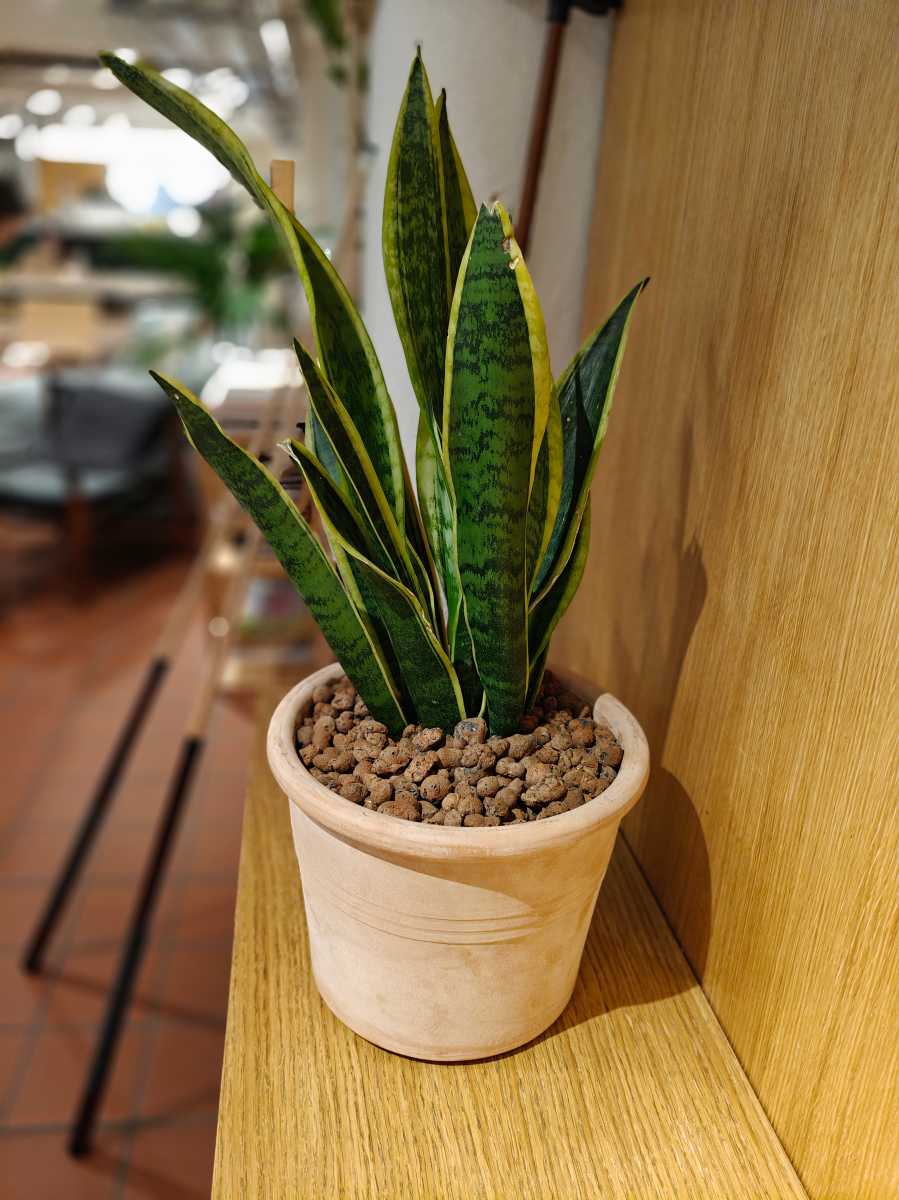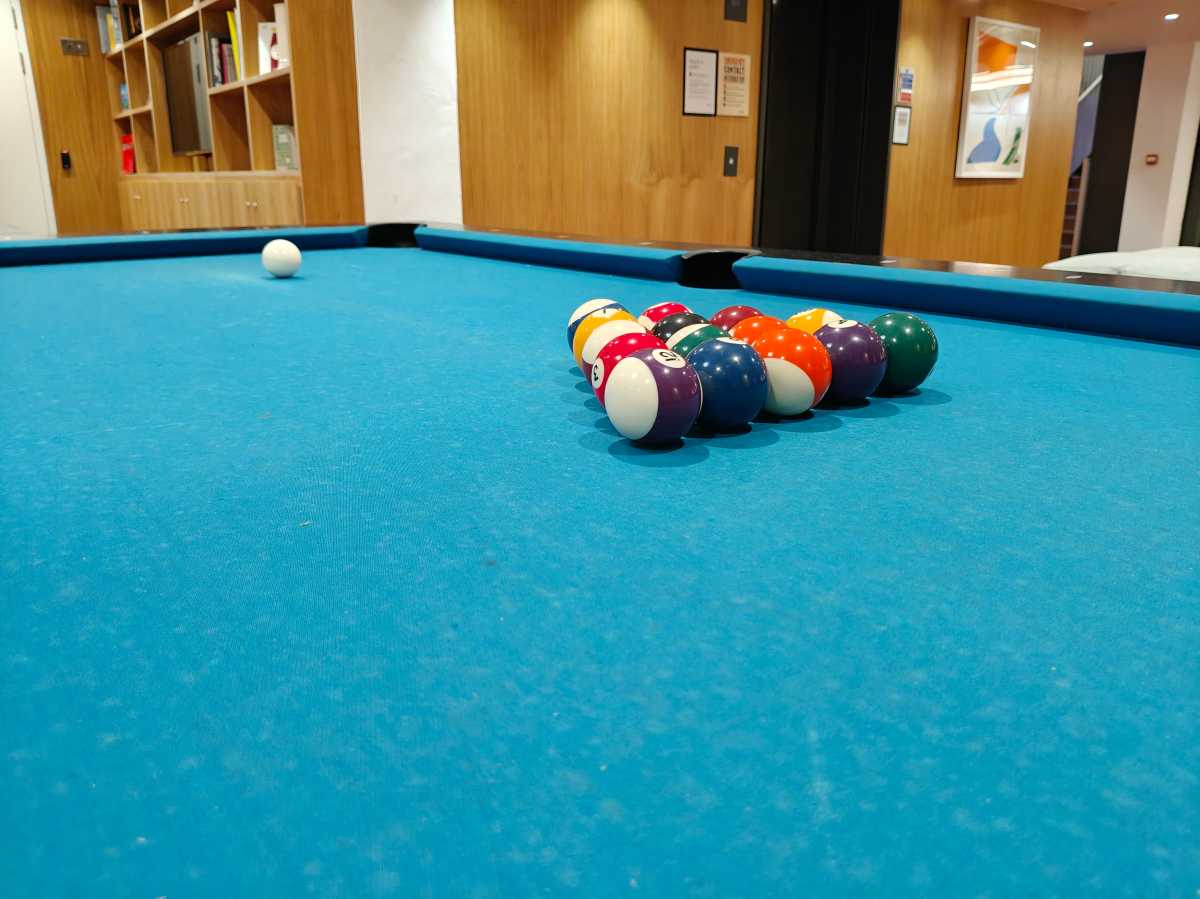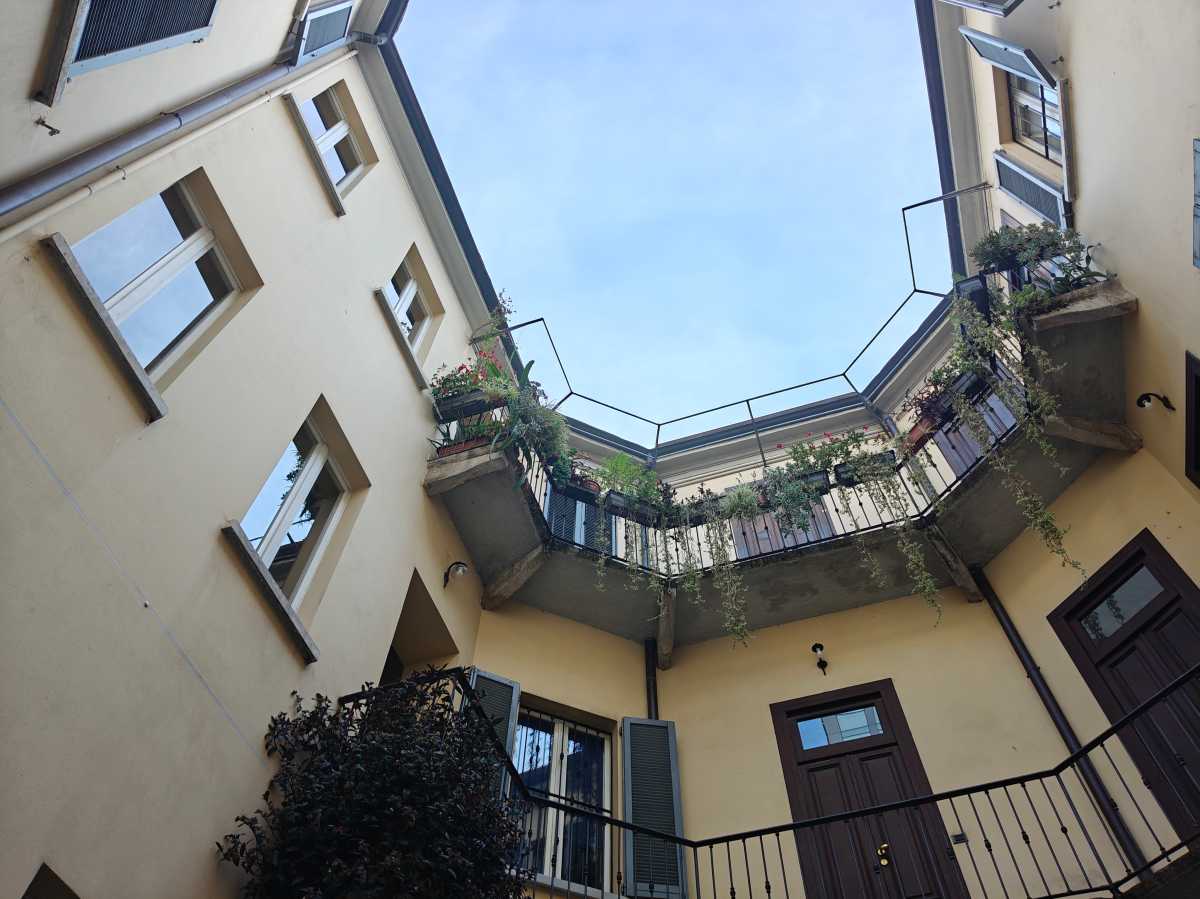Expert's Rating
Pros
- Premium build
- Great display
- Strong main camera
- Solid battery life
- Six years of security updates
Cons
- Polarising design
- Disappointing ultrawide camera
- No telephoto camera
Our Verdict
Despite some flaws, the OnePlus Nord 4 is a superb phone for the money. With an improved update commitment, it’s a better overall buy than the Pixel 8a for many people.
Best Prices Today: OnePlus Nord 4
I’ve been reviewing smartphones for almost five years, and if there’s one thing I’m certain of, it’s that you don’t need to pay premium prices to get a great handset.
There’s evidence of that in many of the best budget phones and best mid-range phones, which offer a great all-round experience, despite being several hundred pounds/dollars cheaper than flagships.
However, few are as ambitious as the OnePlus Nord 4. Despite a starting price of just £429 (sadly not available in the US), it rivals high-end models in many key areas, aiming to maximise value for money.
So, is the company behind one of the original ‘flagship killer’ smartphones onto a winner with its new handset? I’ve spent more than a week using the Nord 4 as my main device to find out.
Design & Build
- Metal unibody design
- Unusual two-tone rear
- IP65 water and dust resistance
The OnePlus Nord 4’s design is arguably its defining feature. Aside from the circular camera lenses on the back, it looks almost nothing like last year’s Nord 3.
In many ways, it’s a big step forward. The Nord 4 is one of the first 5G phones to shift to a metal unibody design, with a single piece of aluminium extending across the back and sides of the device.
Despite all the benefits of its more premium build, I’m still torn on the way the Nord 4 looks
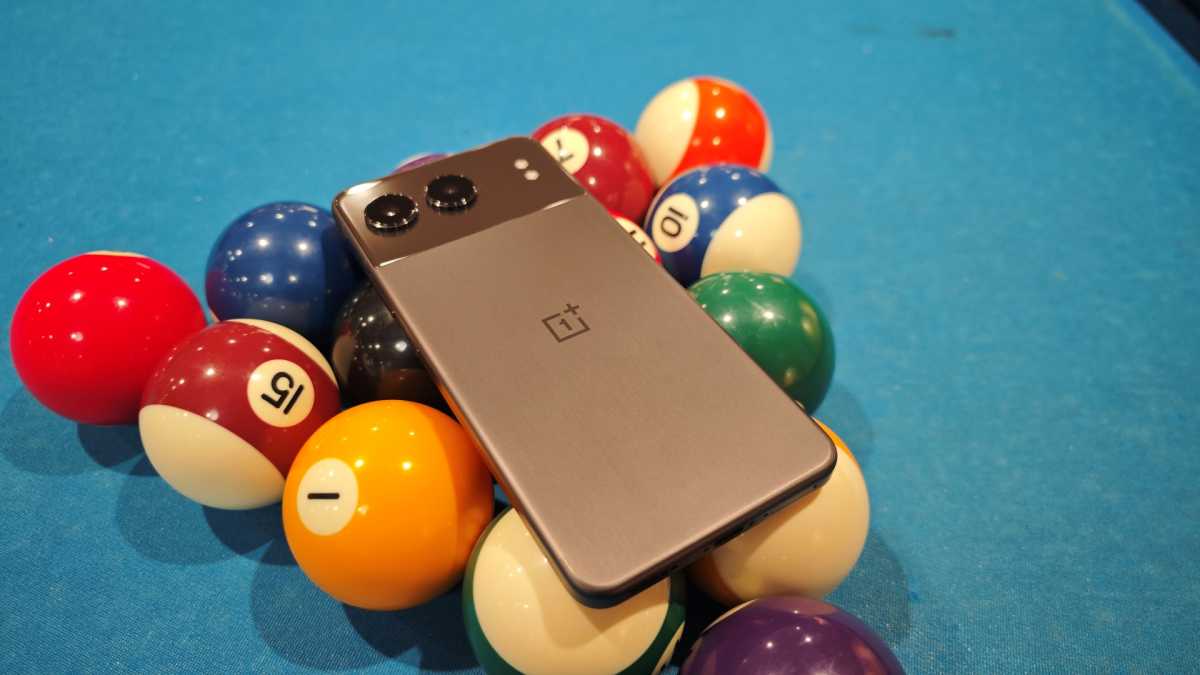
Chris Martin / Foundry
It gives the handset a satisfying weight (despite still only weighing 199.5g), making it feel far more premium than its price suggests. Compared to the glass-backed Nord 3, durability is also much improved – it feels impressively tough and robust, and I’d be confident in it surviving most drops.
An IP65 rating isn’t quite flagship standard, but means it’s fully protected against dust and can survive ‘low-pressure jets of water from any direction’. In other words, you don’t need to worry at all if it gets a bit wet in the rain.
However, despite all the benefits of its more premium build, I’m still torn on the way the Nord 4 looks.
The two-tone ‘Obsidian Midnight’ model I tested looked great when I took it out of the box, but within minutes, the plastic panel surrounding the cameras (taking up the entire top quarter of the rear similar to early Pixel phones) accumulated loads of fingerprint smudges and other dirt.
However, even that couldn’t hide just how reflective the plastic is. I don’t know about you, but I don’t want the back of my phone to double as a mirror.
It’s possible that these issues are less noticeable on the other finishes – a textured ‘Mercurial Silver’ and vibrant ‘Oasis Green’ – but I wouldn’t count on it.
Overall, the Nord 4’s new design has more positives than negatives, but it’s worth being aware of these key drawbacks.
Elsewhere, OnePlus continues to be the only major phone maker including an alert slider on its phones. It’s located on the left side here, making it easy to switch between Ring, Vibrant and Silent modes – the textured finish means you can adjust it without taking the phone out of your pocket.
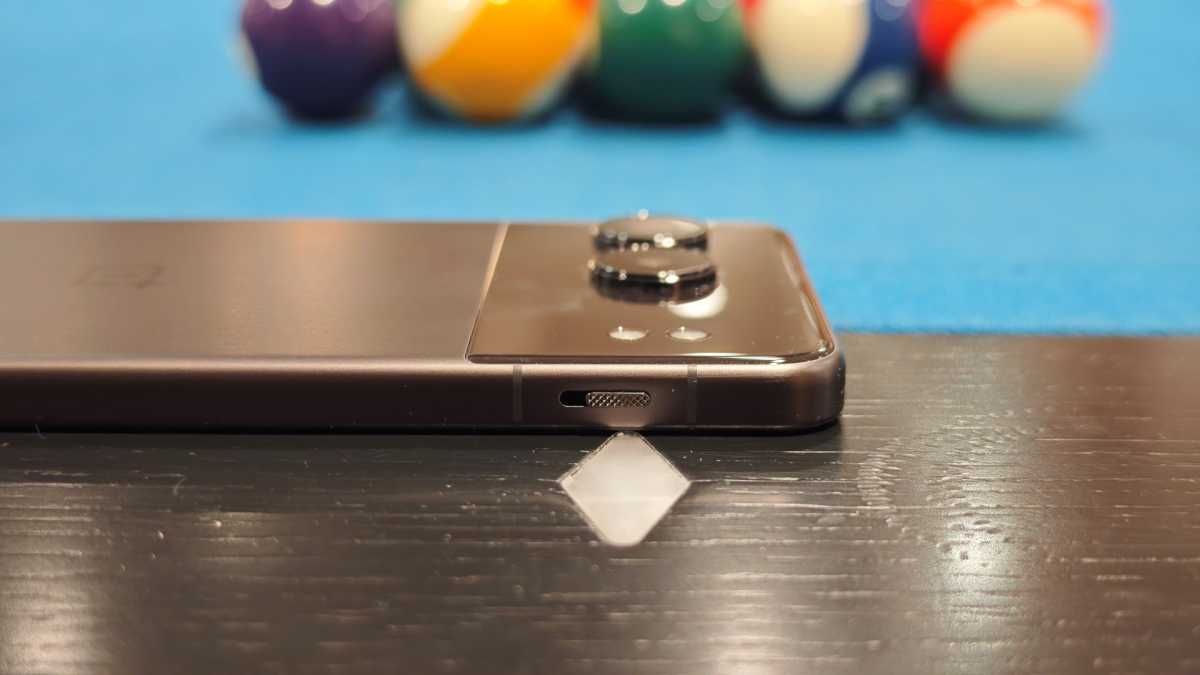
Chris Martin / Foundry
On the opposite side are the usual power and volume controls, while the USB-C port, dual SIM tray and speaker are located at the bottom of the phone.
It’s also worth mentioning the vibration motor, which delivers excellent haptics. OnePlus calls it ‘O-Haptics’, and it offers subtle clipped feedback while typing, swiping and unlocking the phone. Its intensity can be adjusted in settings.
Screen & Speakers
- 6.74-inch Full HD+ OLED
- 120Hz, but no LTPO
- Dual stereo speakers
These days, most mid-range phones have a great display, and that’s no different here. The Nord 4 has a superb screen which delivers a great viewing experience in all environments.
A large 6.74-inch panel, its Full HD+ (2772 × 1240) resolution still offers more than enough detail. While many flagships have higher resolution WQHD+ displays, they’re usually set to Full HD+ by default anyway.
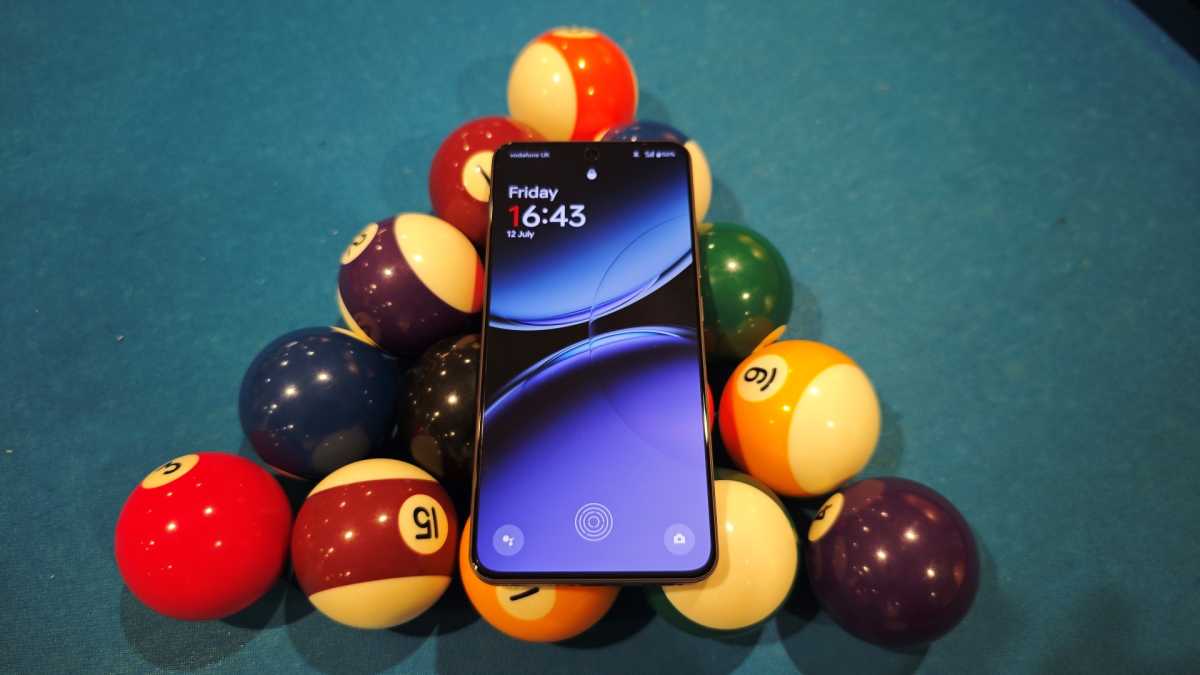
Chris Martin / Foundry
And it retains all the hallmarks of an OLED screen, including rich, vibrant colours and deep blacks. Compared to high-end phones such as the Samsung Galaxy S24 Ultra and Honor Magic 6 Pro, I really didn’t notice a difference.
In testing, I also recorded a respectable maximum brightness of 500 nits. As a result, I had no problem using the phone in bright outdoor environments – including direct sunlight.
The Nord 4’s display isn’t quite best in class, but I didn’t feel like I was missing out at all
However, while it is a 120Hz panel, the Nord 4’s display lacks the LTPO technology found on many premium handsets. Instead, the ‘Auto-select’ refresh rate mode simply moves between 60- and 120Hz depending on what you’re doing, rather than going all the way down to 1Hz to conserve battery life.
So, the Nord 4’s display isn’t quite best in class, but I didn’t feel like I was missing out at all.
Unfortunately, the same can’t be said for the optical in-display fingerprint sensor. It’s easy to set up but frustratingly temperamental, with a small target area and need to hold your finger in position for longer than usual.
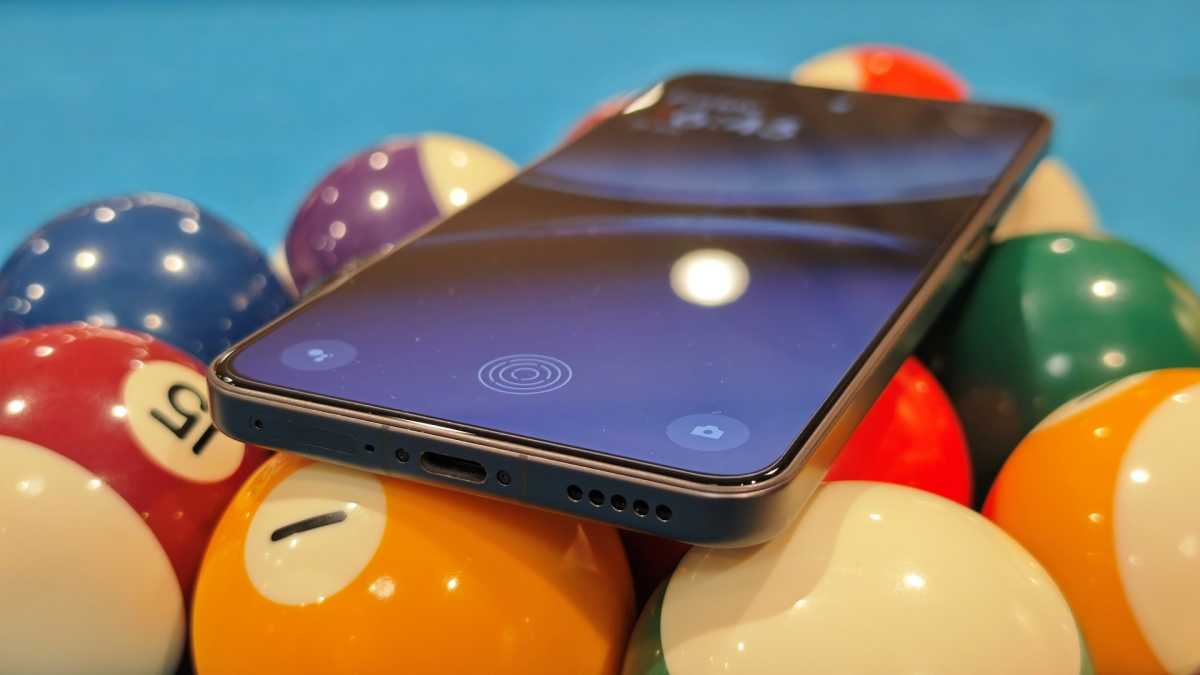
Chris Martin / Foundry
As a result, I often ended up using the less secure face unlock instead, which couldn’t recognise me in dark environments or while wearing glasses.
OnePlus does at least offer ‘AquaTouch’ technology, which makes the Nord 4’s display much easier to use when it gets wet. But I think a side-mounted fingerprint sensor would’ve been a better option in this scenario.
In terms of audio, the Nord 4 features dual stereo speakers, with the usual combination of a downward-firing speaker and earpiece.
Sound quality is fine, offering more bass than most phones and decent clarity, even at high volumes. But if you’re serious about audio, connect headphones instead.
Specs & Performance
- Qualcomm Snapdragon 7+ Gen 3 chipset
- 12- or 16GB RAM
- 256- or 512GB storage
On paper, performance on the Nord 4 is a clear step down from flagships. It’s powered by the Snapdragon 7+ Gen 3 chipset, which isn’t as powerful as Qualcomm’s top-tier Snapdragon 8 Gen 3.
So, is real-world performance noticeably worse than flagships? Not in my experience. Alongside a whopping 16GB of RAM on the model I tested (a 12GB version is also available), performance is a key strength of the Nord 4.
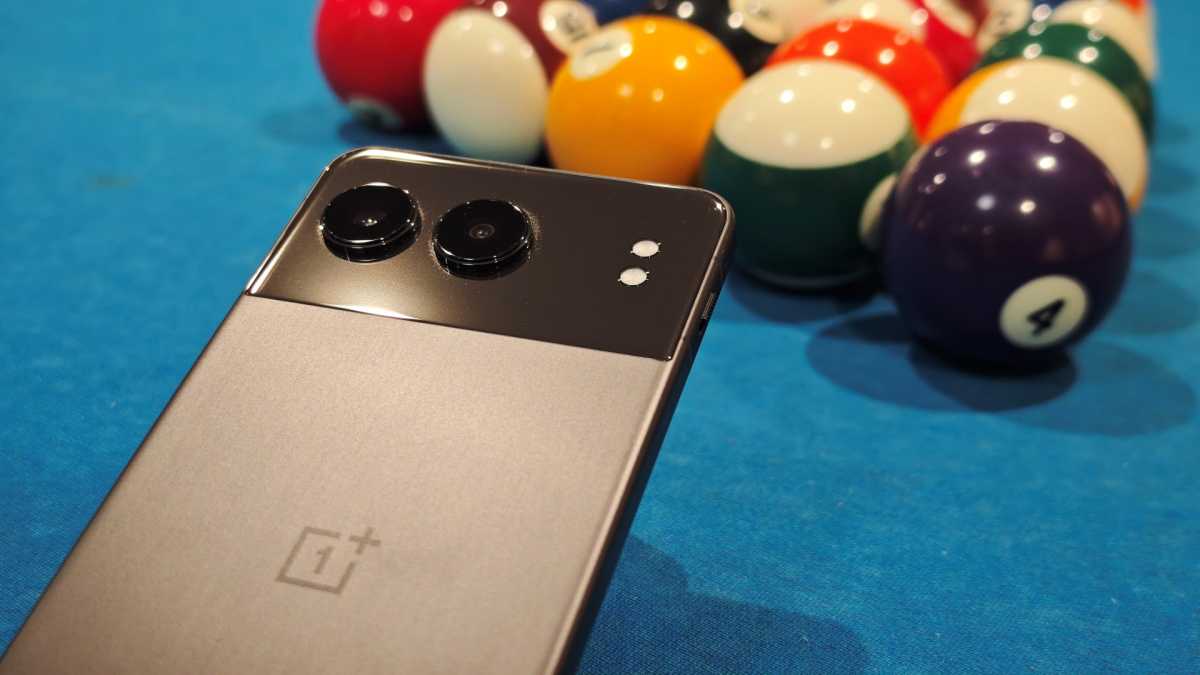
Chris Martin / Foundry
Throughout most of my testing time, I could barely get the phone to hesitate or slow down at all. That included loads of web browsing and taking photos, plus messaging, watching videos and scrolling social media. Everything remained smooth and lag-free throughout, even when quickly switching between them.
Performance is a key strength of the Nord 4
During demanding tasks such as gaming, you begin to see some of its limitations. Graphically-intensive titles such as Call of Duty: Mobile, PUBG Mobile, Asphalt 9 and Genshin Impact aren’t quite as silky-smooth or responsive as the most powerful phones around.
However, they’re all still very playable, and I can’t think of any situation where the Nord 4 wouldn’t offer at least decent performance.
OnePlus Nord 4 benchmarks
In terms of internal storage, you can choose between 256- and 512GB. Either should be plenty for most people, even with a few GB taken up by important system files. OnePlus has opted for a dual-SIM tray rather than expandable storage though, so make sure you get enough.
Connectivity options include Wi-Fi and Bluetooth 5.4, plus NFC for mobile payments.
Cameras
- 50Mp main lens
- 8Mp ultrawide, 16Mp selfie
- No telephoto
Cameras are the obvious area where OnePlus has made compromises on the Nord 4. Compared to its flagship 12, the main lens is different, ultrawide downgraded and telephoto missing completely.
However, write off the cameras at your peril. The 50Mp main camera (a Sony Lytia sensor) can take some excellent shots, especially in good lighting. Detail and dynamic range are consistently strong, while exposure is a key strength.
Just look at the way it captured the dramatic sky and detail in the reflection below:

Anyron Copeman / Foundry
As you can see, colours are generally true to life, which I’m a big fan of. If you prefer a more vivid, saturated look, you can always make the necessary edits later.
The 50Mp main camera can take some excellent shots, especially in good lighting
However, performance isn’t quite as impressive in low light. The automatically applied night mode does a good job of brightening dark environments, yet you do lose some details and quite a bit of noise is introduced.
The portrait mode is decent, delivering an attractive and realistic-looking background blur. Edge detection is a struggle at times, but with some trial and error you can get impressive results.

Anyron Copeman / Foundry
Unfortunately, the ultrawide lens is where things take a turn for the worse. In isolation, photos aren’t bad, but the decline in quality compared to the main camera is significant – colours are more washed out and key details are sacrificed.
The 112-degree field of view is useful at times, but not if you want to be sure of a great photo. The same can be said for zoom shots, where the lack of a telephoto lens means you get no optical zoom. As a result, the digital version means photos start looking grainy once you go beyond 2x.
It’s much better news on the front, where a 16Mp lens delivers clear, crisp selfies with well-exposed faces. I’d argue the portrait mode here is actually better than on the rear camera.
The Nord 4 can shoot video at up to 4K at 60fps, but the default 1080p at 30fps is fine for most people. Footage is on par with most Android handsets, with OIS (optical image stabilisation) on the main lens ensuring it stays smooth, but it lacks the professional look of the iPhone.
Battery Life & Charging
- 5500mAh battery
- 100W wired charging, but no charger in box
- No wireless charging
The OnePlus Nord 4 is equipped with a sizeable 5500mAh battery. That’s one of the largest on any smartphone in 2024, and it’s reflected in the strong battery life throughout my testing.
With light usage, I was able to get the phone to last two full days on a single charge. On those heavier days, you can still start the day at 100% and end it with capacity to spare.

Chris Martin / Foundry
The only exception is if you plan on a longer gaming session, which will deplete the battery much more quickly. However, the same can be said for almost any handset these days.
It’s reflected in our usual PCMark battery test, which simulates real-world usage at a fairly typical 200 nits of brightness (auto brightness turned off).
A score of 13 hours and 19 minutes is above average, albeit not quite good enough to trouble the best battery life phones.
With light usage, I was able to get the phone to last two full days on a single charge
On paper, a maximum wired charging speed of 100W is impressive, though there’s no charger included in the box. Unless you buy the compatible one or already have one at home, charging is much slower than the 0-100% in 28 minutes that OnePlus advertises.
Despite using a 100W adapter of my own, the Nord 4 reached just 12% after 15 minutes and 26% by the half-hour mark. A full charge took one hour and 53 minutes so it clearly wasn’t compatible.
There’s no wireless charging, but that’s no surprise at this price.
Software & Apps
- Oxygen OS 14.1 over Android 14
- Four major OS updates
- Six years of security updates
Out of the box, the Nord 4 runs OnePlus’ Oxygen OS 14.1 skin, which is based on Android 14.
However, there are quite a few changes compared to the experience on Google Pixel phones.
The most noticeable for me is the redesigned quick settings menu, which looks more like Xiaomi’s Hyper OS – found on the likes of the Xiaomi 14 – these days. However, I actually find the collection of round and pill-shaped icons easier to use.
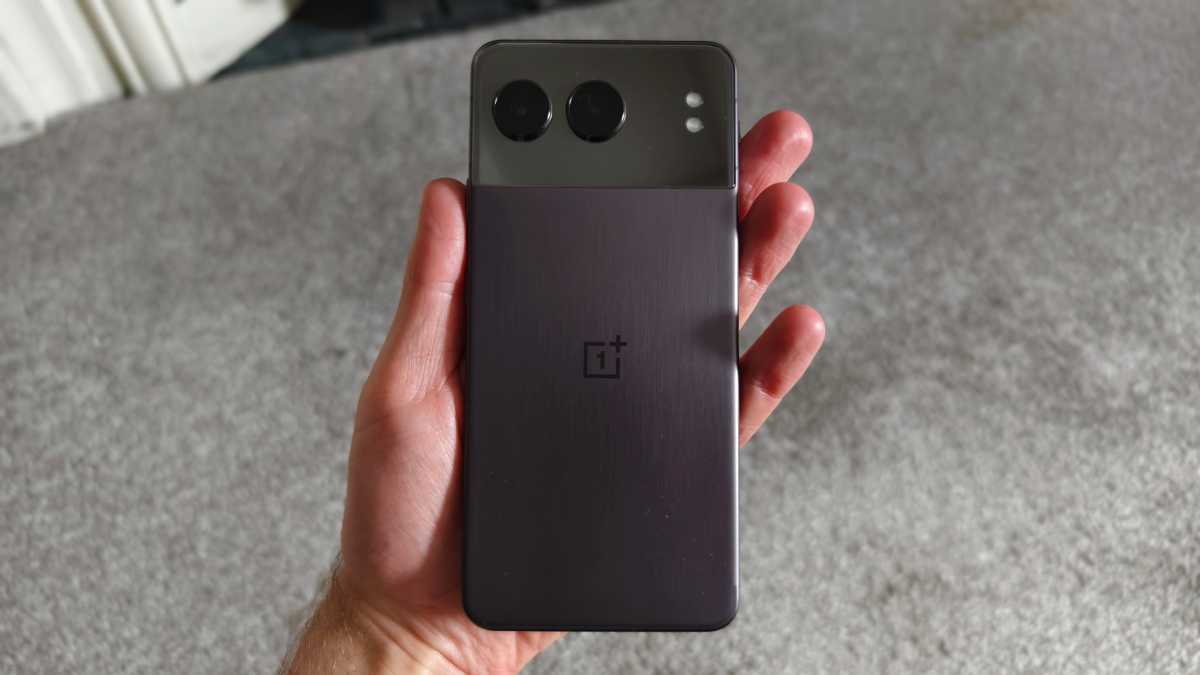
Anyron Copeman / Foundry
You also get rounded square icons by default, plus an app drawer that looks and feels very different. However, I found the software experience as a whole to be very intuitive.
Unfortunately, there’s also a collection of annoying bloatware. Alongside over a dozen of OnePlus’ own apps (some useful, some not), you also have to put up with the likes of AliExpress, LinkedIn, Facebook and several games.
I found the software experience as a whole to be very intuitive
Some of these can be uninstalled, but not all. You really should be given the option to skip installation during setup, as is the case on other phones. As a result, getting things looking and performing the way you like it will take a while.
AI has been used sparingly on the Nord 4, with OnePlus focusing on features that will have the biggest impact on users. Its main objective is for optimising battery life, though you also get a range of tools for text (read, summarise and transcribe) and photos (remove background objects, move and resize subjects).
In a later software update, OnePlus will also be adding ‘AI Best Face’. This appears to be identical to Google’s ‘Best Take’ feature (shown below), which can swap out faces in a group shot to make sure everyone is looking their best.

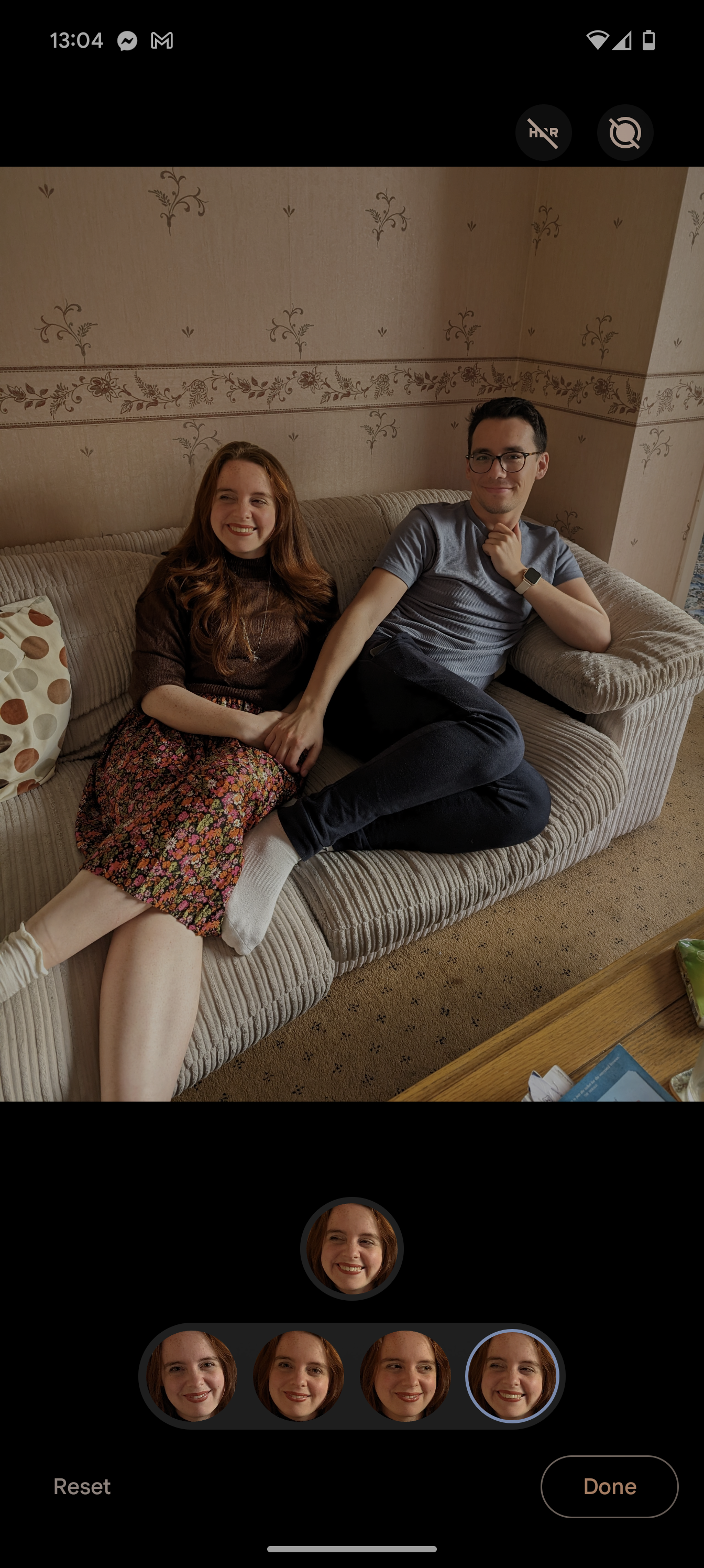
One area where I can have no complaints is software support. OnePlus will provide the Nord 4 with four major OS updates, plus six years of security updates.
At the time of writing, that makes it the cheapest phone to offer such extensive support, though it’s worth noting that the £499 Google Pixel 8a gets you seven years of both.
Of course, the question regarding how well it’ll be holding up in 2030 remains to be seen. But the Nord 4 has been independently ‘fluency tested’ for 72 months, suggesting it should remain mostly fast and smooth.
Price & Availability
The OnePlus Nord 4 starts at £429/€499. That gets you a model with 12GB of RAM and 256GB of storage, though the more expensive version tested here costs £529/€599.
It’s available directly from OnePlus. No UK operators are selling the phone on contract, so you’ll have to buy it outright and pair with a SIM-only deal. Use the widget below to find an option that suits you:
Unfortunately, despite OnePlus flagships being sold there, the Nord 4 isn’t available in the US. You can try and import one, but there’s no guarantee it’ll work.
In the UK, the Nord 4 has plenty of mid-range rivals, including the Google Pixel 8a (from £499), Samsung Galaxy A55 (from £439) and Xiaomi Redmi Note 13 Pro+ (£449).
Should you buy the OnePlus Nord 4?
If you have around £500 to spend on a new Android phone, the answer is probably yes. The Nord 4 has weaknesses, but you’ll struggle to find better value for money at this price point.
The build, display, battery life and main camera are all very impressive, making it a strong all-rounder. And while OnePlus’ Android skin isn’t as slick as it once was, the phone is still very easy to use, and now offers six years of security updates.
Downsides include a disappointing ultrawide camera, unusual two-tone rear design and the lack of a 100W charger in the box.
None of these will be dealbreakers for most people, and in a straight fight with the slightly more expensive Google Pixel 8a, the Nord 4 is a better buy for most people.
Specs
- Qualcomm Snapdragon 7+ Gen 3 chipset
- 12/16GB RAM
- 256/512GB internal storage (expandable up to 1.5TB via Micro-SD)
- 6.74-inch, 2772 × 1240 OLED display, 120Hz
- 50Mp main camera with OIS
- 8Mp ultrawide camera
- 16Mp front-facing camera
- 5500mAh battery
- 100W wired charging
- 5G
- Dual stereo speakers
- Wi-Fi 6
- Bluetooth 5.4
- NFC
- IP65 water and dust resistance
- Android 14
- 162.6 x 75 x 7.9 mm
- 199.5g













